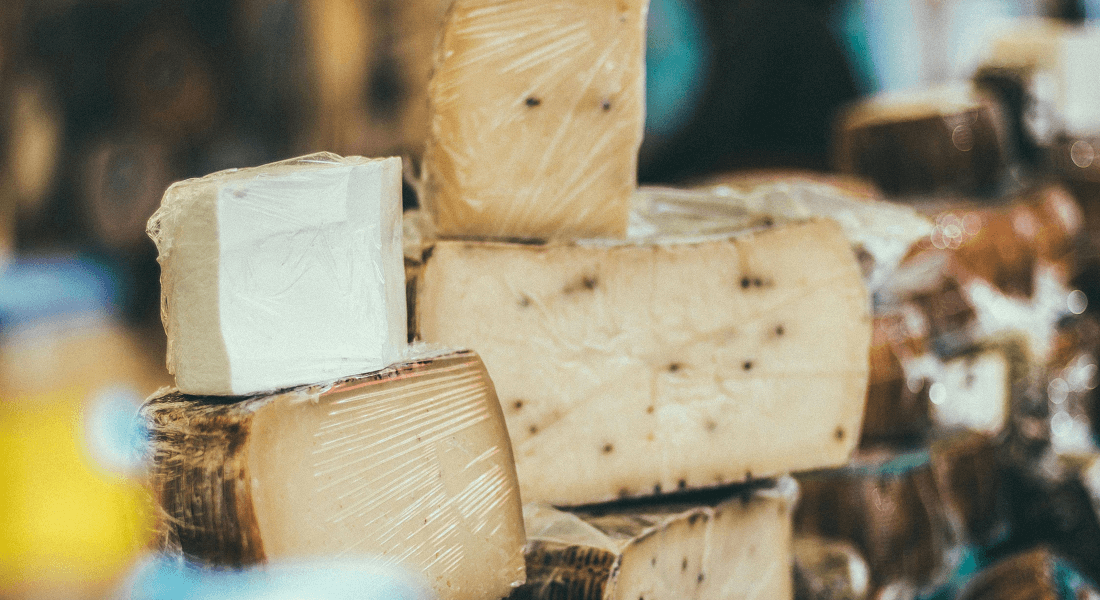Developing the hybrid cheese of the future
A new research project led by the Department of Food Science at University of Copenhagen is setting out to create hybrid cheeses that combine dairy and local plant proteins to significantly reduce the carbon footprint – without sacrificing taste and texture.

Cheese is one of the most widely consumed dairy products in the world, with a variety of characteristics, tastes, and textures to match. In Denmark alone, more than 400.000 tons of cheese is produced per year, and it generates an annual revenue of over $ 1 billion in exports. And with such an enormous market, how big of an impact could it have to replace half, or even more, of the milk proteins with plant proteins?
That is what Professor Lilia Ahrné from the Department of Food Science is setting out to do with the new project, HyCheese. And the time is ripe for such a cheese to enter the market, says Lilia Ahrné.
“Most consumers are open to flexitarian diets and are willing to reduce their environmental impact by consuming more plant-based products. And the cheeses that we’re setting out to produce embodies exactly that – combining dairy and plant proteins to get the best of both worlds and reduce the carbon footprint. Cheese already has such a huge variety, that a new, tasty cheese with its own character could easily enter the market and fill a place that fully plant-based cheese is struggling to reach” explains Lilia Ahrné.
Finding the protein ceiling

HyCheese has a total budget of DKK 20 million, of which it has been granted around DKK 13 million by the AgriFoodTure. It is set to run until January 2028. The project is working towards high-quality sliceable hybrid cheeses, made from a mix of milk- and plant proteins, by the end of the project period. But the first step will be basic research into the milk- and plant proteins and their possible synergies – and for good reason.
“It’s very difficult to create the same protein structure of cheeses, using plant proteins. People have tried to mimic the structure of cheese using just plant proteins, but they are too different from dairy proteins. So, typically starch is used or added instead, but that has ramifications for both taste and texture. But we know a lot about how to create gel structures with proteins, and we’re hoping to harness some synergy effects to better integrate the plant proteins,” says Lilia Ahrné, who has large experience in structuring technologies.
One of the crucial points in moving from the initial basic research into the more product-oriented project work will be to determine exactly how much plant protein can be combined with dairy proteins, to significantly reduce carbon footprint while still getting the right texture and taste. An initial estimate is between 40 and 80% of plant-based ingredients.
Local transformations
Behind Lilia Ahrné, as the HyCheese project manager, stands a Danish consortium of leading partners with a range of expertise that makes the project strong in everything from gastronomic science, cheese-making knowledge, plant and cheese processing, as well as the market where future consumers will hopefully find hybrid cheeses.
They are yet to decide which plant proteins they will focus on integrating into the hybrid cheeses, but it is already now determined that they must be Nordic. The main point of this requirement is to encourage change in the dairy industry on a global level – because if HyCheese succeeds in creating a method to use local plant proteins for tasty hybrid cheeses, that method can be used elsewhere, with other local ingredients, as well.
“I believe in creating food that can be developed upon in local communities. In producing products based on raw materials that grow locally. In this way you develop your farm and the system around it and create an ecosystem that can be sustainable in the long run,” explains Lilia Ahrné.
Contact
Lilia Ahrné
Professor, Department of Food Science, University of Copenhagen
lilia@food.ku.dk
Thomas Sten Pedersen
Communications Officer, Department of Food Science, University of Copenhagen
thomas.pedersen@food.ku.dk
